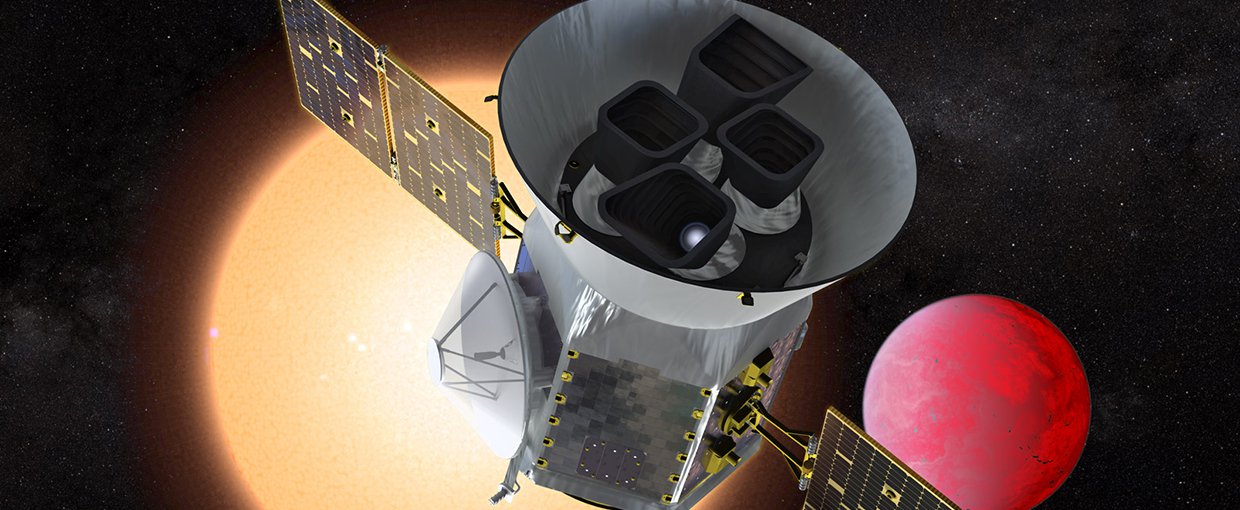
Different methods of searching for and finding distant exoplanets give different information about the planets found.
The transit method — where an exoplanets passed in front of its sun and dims the bright sunlight ever so slightly — gives astronomers not only a detection but also its radius or size.
The radial velocity method — where an exoplanet’s gravity causes its host star to “wobble” in a way that can be measured — provides different information about mass and orbit.
If a planet can be measured by both the transit and radial velocity methods, an important added dimension can be determined — how dense the planet might be. This tells us if the planet is rocky or gaseous, watery or even if it has a central core and might have an atmosphere. So many things have to go right that this kind of dual detection has seldom been accomplished for a relatively small and rocky planet, but such a new planet has now been found.
The planet, Gliese 486b, is a super-Earth orbiting its host star at only 24 light-years away. That makes the planet the third closest transiting exoplanet to Earth that is known, and the closest with a measured mass that transits a red dwarf star.
The authors of the study in the journal Science say Gliese 486b is an ideal candidate for learning how to best search for and characterize an all-important atmosphere, and to study potential habitability, too. Future telescopes will make this kind of work more of a reality.
“Gliese 486 b is not hot enough to be a lava world,” lead author Trifon Trifonov of the Max-Planck-Institut für Astronomie and colleagues write. “But its temperature of ~700 Kelvin (800 degrees Fahrenheit) makes it suitable for emission spectroscopy and …. studies in search of an atmosphere.”

Planet Gliese 486b is close to us (in a relative sense), rocky, on the small side and may have an atmosphere. These conclusions come from studying the planet using both the transit and radial velocity techniques, which have been the primary methods used by astronomers to find and characterize exoplanets. Charts showing the presence of the planet using both techniques are in the blue boxes.Image credit: Render Area, Max Planck Institute for Astronomy, MPIA.
“The discovery of Gliese 486b was a stroke of luck,” co-author José A. Caballero of the Centro de Astrobiología in Spain said in a statement. “A hundred degrees hotter and the planet’s entire surface would be lava. Its atmosphere would consist of vaporized rocks. On the other hand, if Gliese 486b were a hundred degrees colder, it would have been unsuitable for follow-up observations.”
Gliese 486 is a red dwarf star and the orbiting planet has a mass 2.8 times that of Earth and is about 30 percent larger. Using the mass and radius they were able to derive from the two methods of exoplanet detection, the researchers calculated the density of the planet and concluded it was probably made up of iron and sillicates and thus similar to Earth and Venus. They said it was also likely to have a metallic core and some form of atmosphere.
Studies of exoplanets in recent years have shown that super-Earths the size and density of Gliese 486b are common in our galaxy, though there are none in our solar system. Super-Earths are defined as planets larger and more massive than Earth but smaller and less massive than Neptune. Despite the name “super-Earths,” they are not simply larger versions of Earth and are instead a unique type of exoplanet with characteristics that remain little understood.
Some orbit close to their stars and are probably too hot for any life, and Gliese 486b falls into that category since it travels around its sun every 1.46 days. But it still might have an atmosphere.
Stellar radiation tends to evaporate planetary atmospheres very close to a host star but the planet’s gravity helps to retain it. Figuring out the balance of those contributions for a planet such as Gliese 486b is a difficult challenge the team — the German-Spanish CARMENES consortium — is looking forward to taking on.
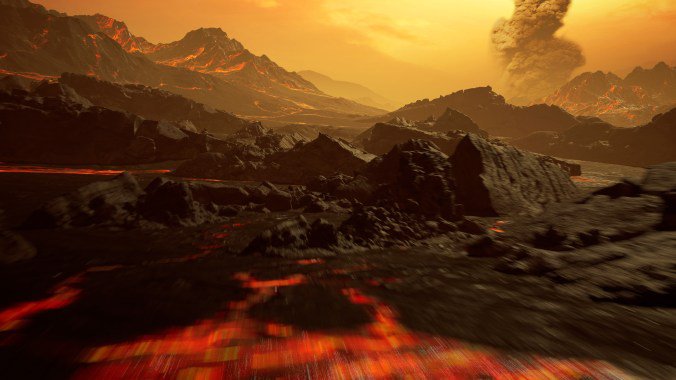
Artist impression of the surface of the newly discovered hot super-Earth Gliese 486 b. With a temperature of about 700 Kelvin (almost 800 degrees Fahrenheit), 486b possibly has an atmosphere.Image credit: RenderArea, MPIA.
The authors say that Gliese 486b’s surface probably looks more like Venus than Earth, with a hot and dry landscape broken up by glowing lava rivers.
Knowing whether super-Earth sized planets retain their atmospheres when close to their stars could provide clues about the potential habitability of these worlds. The more temperate ones, a bit farther from their stars, will of course be of greater interest when it comes to searching for evidence of possible life.
Trifonov said in a statement that the proximity of Gliese 486b makes it’s discovery especially exciting since in the near future it can be studied it in more detail with powerful new telescopes such as the James Webb Space Telescope (scheduled to launch this year) and future ground-based “Extremely Large Telescopes.”
“The results will help us to understand how well rocky planets can hold their atmospheres, what they are made of and how they influence the energy distribution on the planets,” he said.
Researchers will be working to catch the planet again while it transits in front of its star as seen from Earth. This would allow them to use spectroscopy, which reveals the presence of various compounds according to how they absorb light at specific wavelengths. This process allows them to find out much more about the composition of the planet and its thin atmosphere.
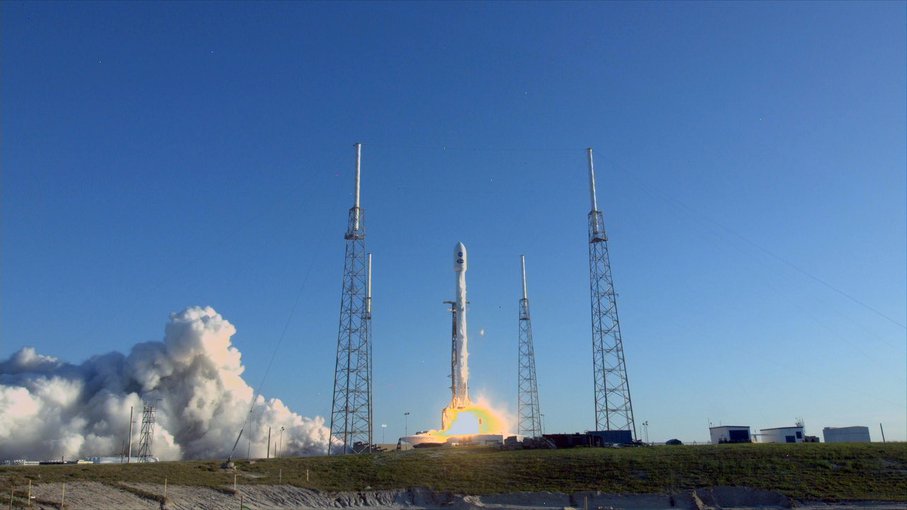
Liftoff of the SpaceX Falcon 9 rocket carrying NASA's TESS spacecraft.Image credit: NASA TV.
CARMENES (Calar Alto high-Resolution search for M dwarfs with Exoearths with Near-infrared and optical Échelle Spectrographs) is a next-generation instrument built for the 3.5 meter telescope at the Calar Alto Observatory in Spain by a consortium of German and Spanish institutions. It was used to search for the planet via radial velocity for several years.
And then between March 9 and April 15, 2020, NASA’s TESS (Transiting Exoplanet Survey Satellite) spacecraft detected the same planet using the transit method and its orbital period was determined to be 1.467 days — just what the CARMENES team had tentatively found.
“What makes this discovery so exciting is that it is a quintessential example of the planets that TESS was designed to discover,” Jon Jenkins, the TESS Mission Data Processing Lead at NASA’s Ames Research Center, wrote in an email. Gliese 486b is small, undoubtedly rocky, and relatively close — the TESS sweet spot.
“It is a super-Venus planet rather than a super Earth, which sets it apart from many of the prior TESS discoveries of hot Earths that are most likely lava worlds and/or too hot to retain a significant atmosphere,” Jenkins said.
“What makes this even more exciting is that it is the third closest exoplanet to Earth and the closest with a precise mass determination orbiting an M star,” Jenkins wrote. “In fact, its mass estimate is the most precise of any planet orbiting an M star obtained with RV (radial velocity,) comparable only to the famous TRAPPIST-1 system.”
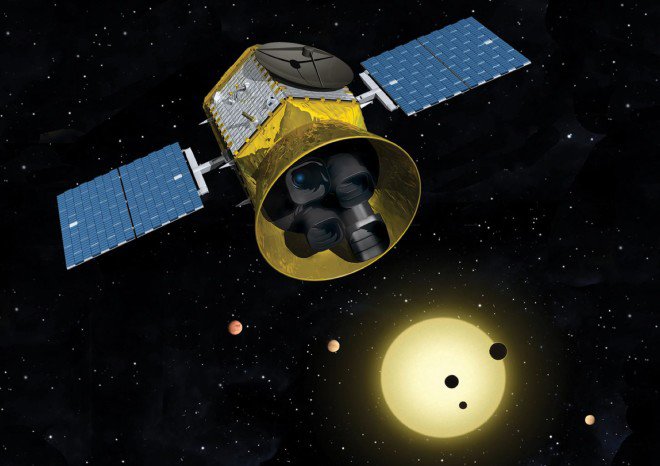
Highlighting the global networking of much astronomy today, the CARMENES team also worked with scientists operating the MAROON-X radial velocity spectrograph at the Gemini North telescope in Hawaii and retrieved archival data from the W.M. Keck telescope (also in Hawaii). They worked as well with the European Space Observatory’s large telescope in Chile and the Las Cumbres Observatory Global Telescope — which consists of seven telescopes placed around the world that work together as one..
Incidently, the name Gliese 486 comes from the Gliese Catalogue of Nearby Stars. In 1957 German astronomer Wilhelm Gliese published his first star catalogue of 915 known stars within 65 light-years of Earth, listing their known properties and ordered geographically. The catalogue has been updated regularly and now the catalogue lists more than 3,800 “nearby” stars.
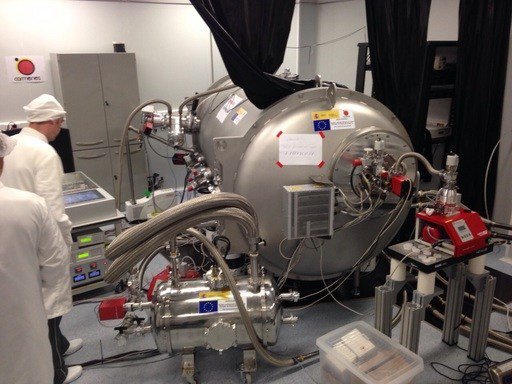
The CARMENES spectrograph went into operation in 2016. A spectrograph splits light collected by a nearby telescope mirror and obtains and records an astronomical spectrum. Using the products of a spectrograph, astronomers can deduce the chemical composition of objects they view.Image credit: CARMENES.
The Many Worlds Blog chronicles the search for evidence of life beyond Earth written by author/journalist Marc Kaufman. The “Many Worlds” column is supported by the Lunar Planetary Institute/USRA and informed by NASA’s NExSS initiative, a research coordination network supported by the NASA Astrobiology Program. Any opinions expressed are the author’s alone.
